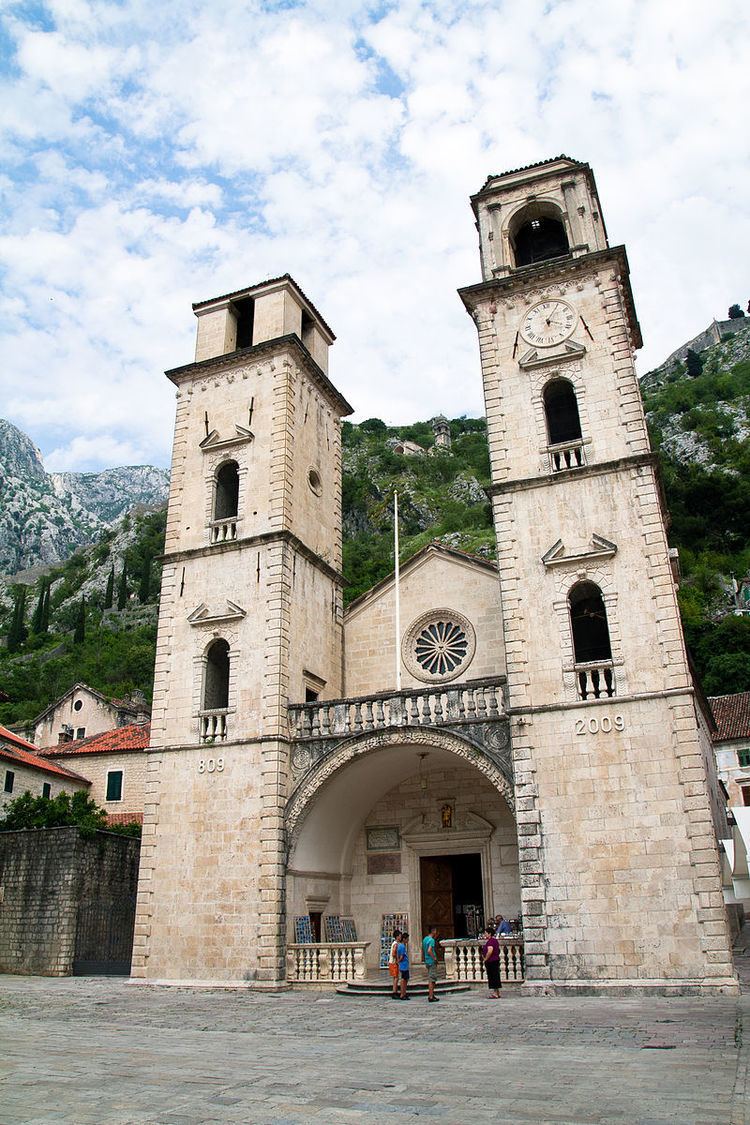Website Kotorska biskupija Phone +382 32 336 242 | Denomination Roman Catholic Bishop(s) Mons. Ilija Janjić | |
 | ||
Similar Castle Of San Giovanni, Maritime Museum, Our Lady of the Rocks, Lovćen, Sveti Đorđe | ||
The Cathedral of Saint Tryphon (Serbo-Croatian: Katedrala Svetog Tripuna/Катедрала Светог Трипуна) in Kotor is one of two Roman Catholic cathedrals in Montenegro. It is the seat of the Catholic Bishopric of Kotor which covers the entire gulf, currently led by Bishop Monsignor Ilija Janjić.
Contents
Location and name
It is located in the city of Kotor, one of the best preserved and most beautiful medieval fortified towns in the Mediterranean. It was built in honor of Saint Tryphon (local name Sveti Tripun), the patron and protector of the city, on the same site where an older church had already existed long ago. That earlier church was built in 809 by Andrija (Andreaccio) Saracenis, a citizen of Kotor, where the remains of the saint were kept after being brought from Constantinople (now also known as Istanbul).
History
The cathedral was consecrated on 19 June 1166. Compared to other buildings, the Kotor Cathedral is one of the largest and most ornate buildibgs in Kotor. The cathedral was seriously damaged and rebuilt after the 1667 Dubrovnik earthquake, but there were not enough funds for its complete reconstruction.
The April 1979 Montenegro earthquake, which completely devastated the Montenegro coast, also greatly damaged the cathedral. Luckily, it has been salvaged and the careful restoration of parts of its interior has not been completed until a few years ago. The Romanesque architecture, contains a rich collection of artifacts. Older than many famous churches and cathedrals in Europe, the cathedral has a treasury of immense value. In its interior there are frescoes from the 14th century, a stone ornament above the main altar in which the life of St Tryphon is depicted, as well as a relief of saints in gold and silver.
The collection of art objects includes a silver hand and a cross, decorated with ornaments and figures in relief. It is only a part of the valuable objects of the Treasury of this unique sacral building which was the City Hall in the past. Today, it is the best known tourist attraction in Kotor and a symbol of the city: the Saint is depicted in the city's coat of arms, along with a lion and the Mount of San Giovanni.
